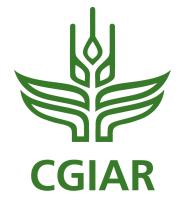Resource information
This document is a supplement to the UNFCCC NAP technical guidelines. It aims to raise awareness amongst national policymakers on the potential importance of digital agriculture (DA) in National Adaptation Plans (NAPs), provide tangible information on how it can be incorporated into NAP formulation and propose ways forward to implementing DA at scale.
The research for this supplement included reviewing the existing literature on digital agriculture and its role in supporting climate adaptation, alongside consultations with experts from the research community and UNFCCC.
The influence of digital technology on the agricultural sector has grown rapidly over the last decade. So far, its greatest influence has been in the Global North, though it has the potential to greatly disrupt the agricultural sector in the Global South this decade.
NAPs offer an opportunity to boost the climate resilience of the agricultural sector through promoting policies, incentives and the public-private partnerships needed for digital agriculture to thrive. Although there can be high upfront costs, the return on investment in digital agriculture can be correspondingly high when designed well.
Spatial information can significantly inform future government priorities and decisions regarding crop suitability and adaptation in the agricultural sector. This information can be used to directly feed into the NAPs themselves, as well as to help integrate agriculture into NAP indicators and outputs.
Digital market access tools can strengthen farmers’ resilience to climate shocks and resulting market fluctuations. Promoting the adoption of improved digital market access could therefore be a key option to review as part of NAP design.
Overall, when well designed, DA can ‘leapfrog’ the challenges associated with traditional delivery channels. By 2030 it is expected that 80% of the world’s rural areas will be digitally connected. This presents enormous potential for DA to help build climate resilience in the agricultural sector.
Going forward the NAP process presents a unique opportunity to achieve consistency amongst countries and pool efforts towards implementing DA at scale. It can also provide an entry point for development partners and other actors seeking to expand their own digital agriculture support programs.


